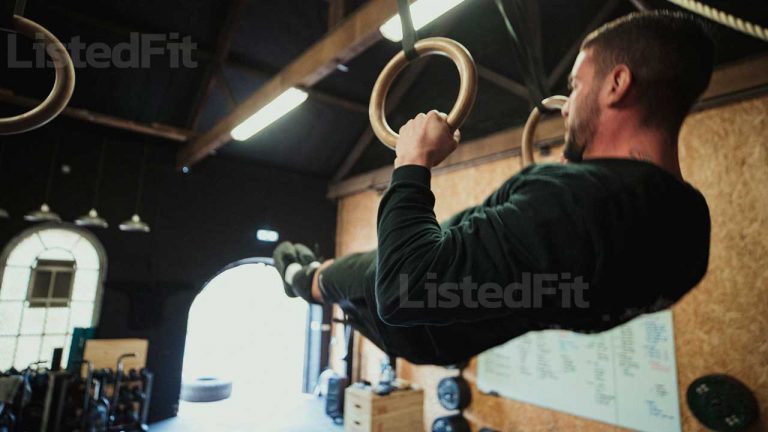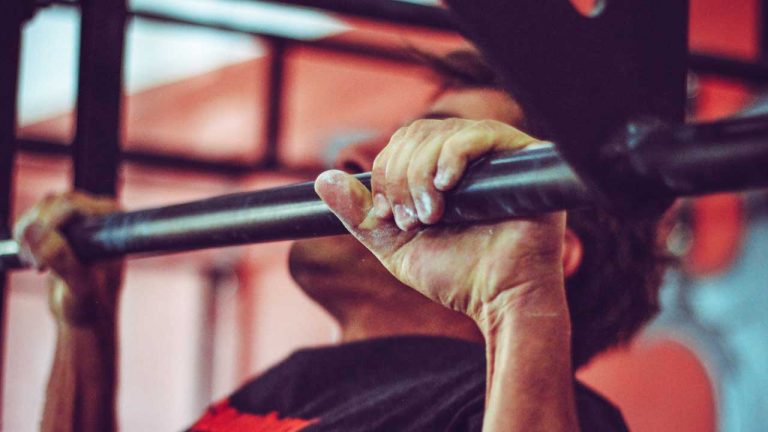Is Crossfit Good for Weight Loss? And Other CrossFit FAQs

ListedFit is reader-supported. When you buy through links on our site, we may earn a small commission.
CrossFit has taken the fitness world by storm in recent years as countless enthusiasts rave about the program’s ability to deliver physical gains and transform lifestyles.
But, when it comes to shedding those extra pounds, is CrossFit really the best approach to weight loss?
Individuals venturing into the realm of CrossFit often wonder whether it’s an effective way to melt fat, and for good reason.
There’s no denying that the high-intensity, varied workouts characteristic of CrossFit can certainly aid in building muscle strength and stamina.
In fact, a 2013 study published in The Journal of Strength and Conditioning Research found that 10 weeks of CrossFit decreased body fat by an average of 15.5 percent.
Many factors come into play, such as individual fitness levels, workout frequency, and nutrition.
Above all, achieving lasting weight loss with CrossFit requires dedication, discipline, and a well-balanced diet.
Summary
As with any fitness regimen, CrossFit’s effectiveness boils down to the individual and their commitment to the program.
For some, CrossFit may be just the ticket to shed unwanted weight, while others may find alternative fitness approaches better suited to their needs.
Whatever path one chooses, weight loss success ultimately hinges on the delicate balance between calorie consumption and expenditure.
Key Takeaways
- CrossFit can be effective for weight loss if combined with proper nutrition and consistency.
- Individual commitment and discipline play a significant role in CrossFit’s weight loss effectiveness.
- A balanced combination of workout routines and a healthy diet is key to achieving lasting weight loss results.
In This Article…
What Does CrossFit Do to Your Body?

CrossFit is a high-intensity fitness programme that engages various muscle groups and can significantly impact your body.
The exercises include a mix of aerobic activities, strength training, and gymnastics, all designed to improve your physical strength, stamina, and overall fitness.
Let’s dive into some of the changes you may experience in your body due to CrossFit.
- CrossFit can lead to an increase in muscle mass. As you engage in different exercises, especially those that involve lifting weights, your muscles are put to work, helping them grow. Regular CrossFit sessions can result in a stronger, more toned physique, giving you that feeling of accomplishment.
- CrossFit aids in fat-burning and weight loss. A 2013 study found that 10 weeks of CrossFit led to an average body fat decrease of 15.5%. As you work through the various high-intensity movements, your body is constantly burning calories, making it easier for you to achieve a slimmer physique.
- CrossFit exercises can improve your joint mobility and flexibility.
Many everyday movements are mimicked in the routine, such as squatting and lifting objects, which helps train your muscles, joints, and ligaments. Consequently, your posture and overall body mechanics may also improve.
CrossFit is also known to boost your cardiovascular endurance. The aerobic activities incorporated within the programme keep your heart rate elevated, which increases your heart’s efficiency in pumping blood.
This, in turn, contributes to better overall cardiovascular health.
Lastly, participating in CrossFit can have a positive impact on your mental wellness. The sense of accomplishment from completing challenging workouts combined with the supportive social aspect can help lift your spirits and boost your confidence.
Overall, CrossFit has the potential to bring about several positive changes to your body, ranging from increased muscle mass to improved cardiovascular health. Just remember to always listen to your body, work at your own pace, and consult a professional if need be.
Is CrossFit Good for Weight Loss?
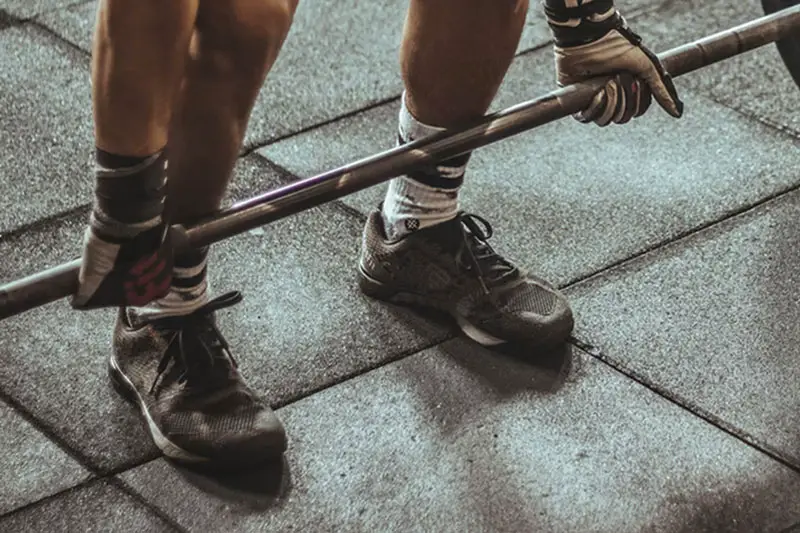
You might be wondering if CrossFit is a smart choice for your weight loss journey. While many people swear by its ability to burn calories and build muscle, it’s essential to consider the pros and cons of this intense fitness regimen.
One of the reasons CrossFit is effective for weight loss is its total body, high-intensity approach to workouts.
These demanding routines keep your heart rate elevated, which in turn helps you burn more calories during and after your workout.
As mentioned, a 2013 study published in The Journal of Strength and Conditioning Research found that 10 weeks of CrossFit led to an average decrease in body fat by 15.5% when comparing pre-training and post-training levels. As a result, you may notice a slimmer overall physique, even if the scale doesn’t significantly change.
CrossFit may also help you gain muscle strength and stamina due to its intensive, multi-joint exercises. Including additional weight in your workouts can further contribute to your weight loss goals.
But it’s important to remember that every individual is different, and weight loss results may vary.
While many find success using CrossFit to shed pounds, it may not be the best fit for everyone, particularly those with pre-existing health conditions or injuries.
CrossFit can be an effective way to lose weight for some people, especially when combined with a well-balanced diet and lifestyle.
Does CrossFit Build Muscle?

CrossFit can indeed help you build muscle, thanks to its unique combination of functional movements, high-intensity workouts and strength training. It’s designed to improve your overall fitness by targeting various aspects, including strength, endurance and flexibility, making it highly versatile and adaptable to your fitness goals.
When you engage in CrossFit workouts, you’ll find yourself performing compound exercises, which involve multiple muscle groups, rather than isolated exercises that target just one.
This means you might be doing squats, deadlifts, and pull-ups, all working different muscles in a single session. This approach can lead to muscle hypertrophy, or growth, as you continually challenge your body through changing exercises and progressive overload.
Furthermore, CrossFit typically features high-intensity interval training (HIIT) and short bursts of high-energy activities.
In these types of workouts, you’re required to perform exercises as quickly and efficiently as possible, making your muscles work harder, which in turn contributes to muscle growth and development.
Another crucial aspect of CrossFit is the community and support it provides. Your local CrossFit gym, or “box,” is a place where you can learn from experienced coaches, seek advice on your form and technique, and benefit from the motivation and encouragement of your fellow athletes.
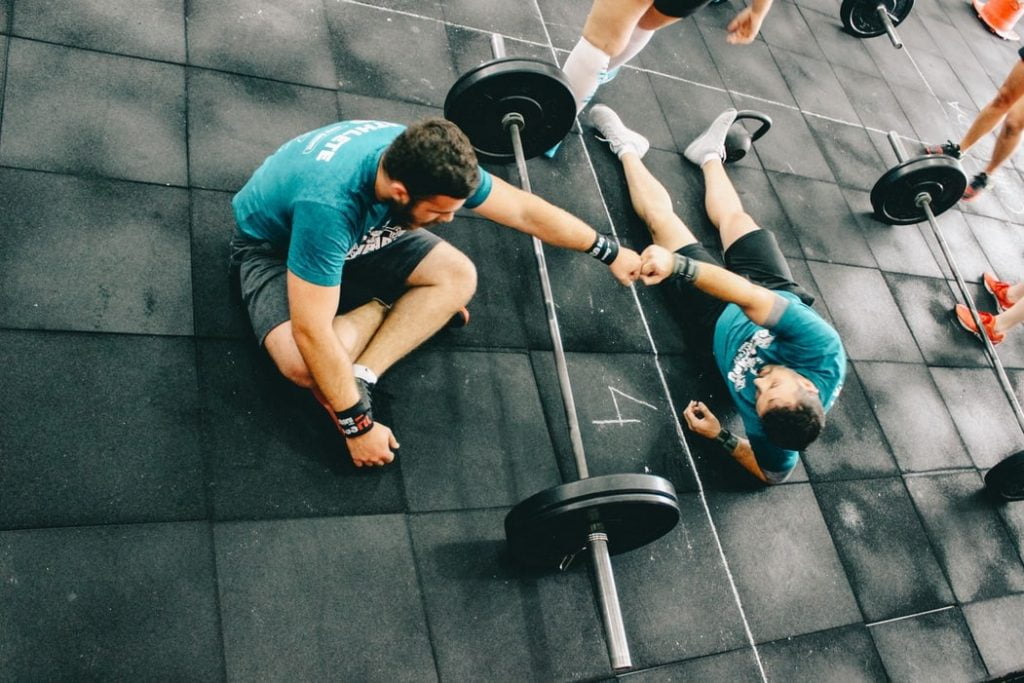
This supportive environment can play a significant role in helping you stay consistent with your training, continually improve, and ultimately develop lean muscle mass.
Just remember, a well-rounded CrossFit programme should be accompanied by a balanced diet, allowing your body to fuel and recover properly, which is essential for muscle growth.
So, if you’re considering CrossFit to build muscle, go ahead and try it out. You might discover that this can be an exciting and effective way to reach your fitness goals while enjoying the camaraderie of a like-minded community.
How to Get Better at CrossFit
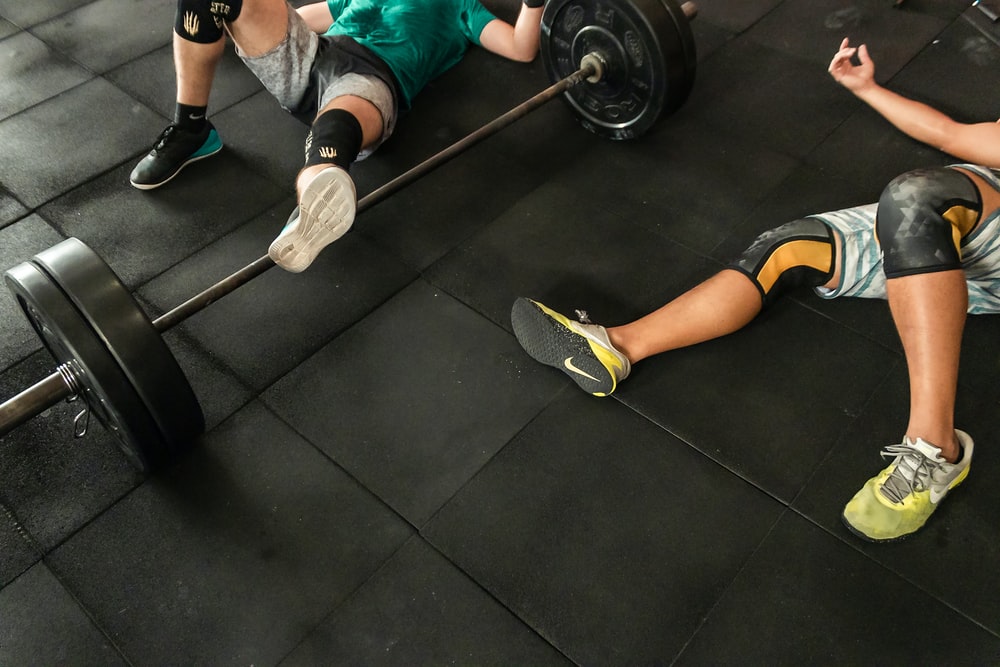
So you want to get better at CrossFit, right?
Follow these tips to step up your game and see great results.
- Firstly, consistency is key.
Make sure to attend your CrossFit classes regularly, ideally 3 to 5 times a week. Being consistent not only builds your physical strength and endurance, but also helps you truly understand the movements and techniques.
- Next, don’t be afraid to ask for help.
Your coaches and fellow CrossFit members are there to support you. If you’re unsure about a movement or technique, ask for guidance. It’s better to get it right than to risk injury from improper form.
- Remember to focus on your form, too.
Proper form is crucial in CrossFit, as it ensures you’re working the right muscles and preventing injuries. Take your time to learn and perfect each movement, even if it means scaling back and using lighter weights for a while. Quality always trumps quantity in this case.
In addition, focus on your mobility and flexibility. CrossFit includes various movements that require a good range of motion, so stretching and mobility exercises outside of class can make a noticeable difference. Try incorporating yoga or regular stretching sessions into your routine for an extra boost.
Nutrition will also play a significant role in your progress. Make sure you’re fuelling your body with a balanced diet that includes plenty of protein, complex carbs, and healthy fats. Adequate hydration is essential as well, so don’t forget to drink plenty of water throughout the day.
Finally, get plenty of rest and listen to your body. Recovering properly is just as important as the workouts themselves. Aim for at least seven to nine hours of sleep each night, and if you ever feel overly fatigued or experience persistent pain, take a break and let your body recover.
By applying these tips, you’ll be well on your way to getting better at CrossFit. So, keep pushing yourself and enjoy the journey!
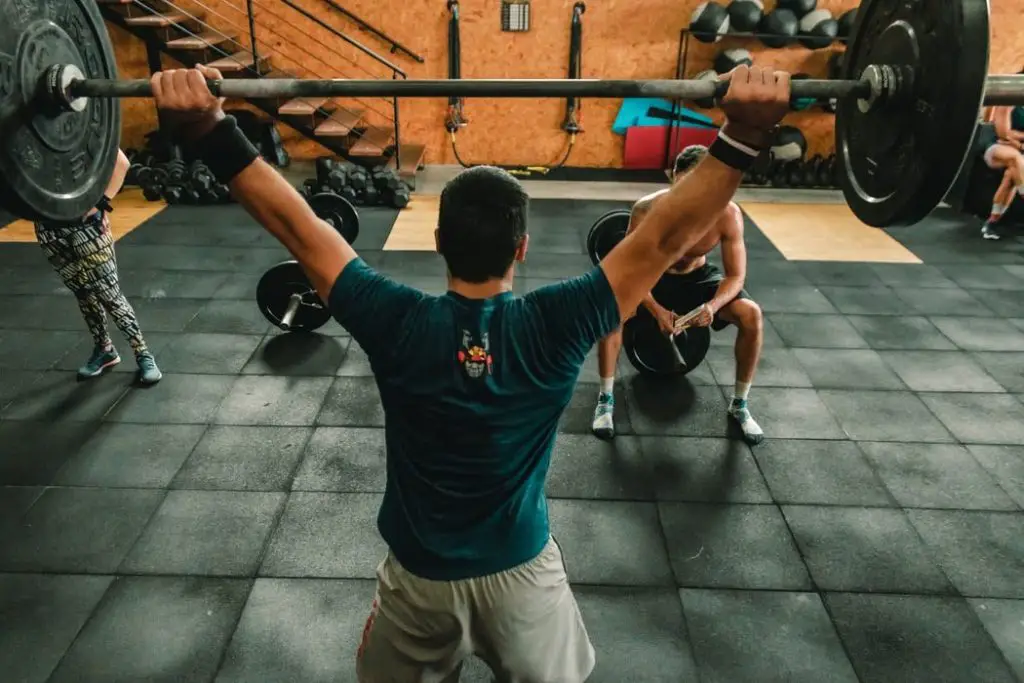
How Do You Track Progress in Crossfit?
When it comes to tracking your progress in Crossfit, there are multiple aspects you should consider.
- Measure your body fat percentage alongside your weight.
Keep in mind that as you lose fat and gain muscle, your weight might not change significantly, but your body composition will.
- Next, make a habit of recording your workout performance.
Whether you keep a journal, an app, or a simple spreadsheet, log your weightlifting progress, such as the weights you lift and the number of repetitions you complete. By consistently updating your fitness milestones, you’ll effectively monitor your improvements in strength over time.
In addition to developing your weightlifting skills, focus on how Crossfit impacts your muscle mass and definition, particularly in your abs and other core areas. You may see changes in muscle tone and definition as a result of consistent training, even if your weight remains largely the same.
Keep it casual, and remember not to obsess over every little detail in your CrossFit progress tracking.
Instead, use these measurements as benchmarks to help you make informed decisions about your workout routine and nutrition. As you continue to track your progress in Crossfit, you’ll soon see improvements in your muscle mass, abs definition, and overall body transformation.
Maintaining a balance of tracking your progress and enjoying the process will ensure that you stay motivated and committed to your Crossfit journey, helping you achieve your weight loss and fitness goals.
Crossfit Vs Traditional Gym Workouts
When it comes to weight loss, both CrossFit and traditional gym workouts have their benefits. In a traditional gym, you’ll focus more on strength training and lifting weights. This helps you build muscle mass, which in turn increases your metabolic rate, allowing you to burn more calories even when at rest. Traditional gyms also offer a variety of steady-state cardio options that can aid in burning calories and improving heart health, all essential for weight loss.
On the other hand, CrossFit incorporates different types of workouts, combining elements of both weightlifting and cardio. These workouts are typically structured as high-intensity interval training (HIIT), which can be very effective at burning calories in a short amount of time. The constantly changing workouts also help to keep you engaged, reducing the monotony that can come with a traditional gym routine.
You might also find that CrossFit promotes functional fitness – that is, training to improve your ability to perform daily activities. This might provide you with more immediate health benefits compared to traditional weightlifting, which often focuses on specific muscle groups.
That being said, there are some considerations to be mindful of when deciding between CrossFit and traditional gym workouts for weight loss. CrossFit workouts are usually more intense – you’ll need proper form and technique to avoid injury. If you’re new to working out or have specific limitations, it might be wise to start with a traditional gym to build a base level of strength and cardiovascular fitness.
Ultimately, the best choice for weight loss depends on your personal preferences. If you enjoy the challenge and intensity of CrossFit, it could be a great option for shedding some extra pounds.
But if you prefer a more structured environment with a focus on strength and cardio, a traditional gym would better suit your needs.
Frequently Asked Questions
Does CrossFit make you bulky?
CrossFit can lead to muscle growth, but whether it makes you bulky depends on factors like genetics, diet, and overall training style.
It’s essential to balance workouts with a proper amount of rest and nutrition, focusing on lean muscle growth and fat loss rather than becoming excessively bulky.
Crossfit Exercises for Weight Loss
Some effective CrossFit exercises for weight loss include high-intensity interval training (HIIT) workouts, which keep your heart rate elevated and help burn more calories.
Examples include burpees, squats, kettlebell swings, and box jumps. Combining these exercises in a workout can maximise your fat-burning potential.
How long does it take to shed pounds with CrossFit?
The time it takes to lose weight with CrossFit varies for each individual, as it depends on factors like consistency, diet, and starting fitness level.
A 2013 study found that 10 weeks of CrossFit decreased body fat by an average of 15.5 percent. Keep in mind that results may differ for each person.
What’s the recommended frequency for CrossFit to lose weight?
To effectively lose weight with CrossFit, it is recommended you attend classes or workouts 3-5 times a week, allowing for rest days in-between.
This frequency allows your body to recover and prevents overtraining, while still providing ample opportunity for weight loss.
Can CrossFit improve muscle mass and promote weight loss?
Yes, CrossFit can help build muscle strength and stamina, while also promoting weight loss.
The high-intensity, multi-joint movements in CrossFit workouts challenge various muscle groups, which may lead to muscle growth and increased metabolism, further aiding in weight loss.
Is CrossFit effective for melting belly fat?
Though you can’t target specific areas for fat loss, CrossFit workouts can help in reducing overall body fat, including belly fat.
The high-intensity nature of CrossFit exercises and full-body workouts contribute to an increased calorie burn, resulting in overall fat loss.
Why might someone not lose weight even when doing CrossFit?
Some reasons someone might not lose weight with CrossFit include a lack of consistency, poor diet choices, inadequate sleep patterns, and high-stress levels.
Additionally, as you build muscle, the number on the scale may not decrease, but your body composition may still be improving.
Focus on how your clothes fit and your overall health rather than just the number on the scale.
Would going to a gym or CrossFit be better for weight loss?
The choice between going to a gym or participating in CrossFit for weight loss depends on your personal preferences and goals.
Both can be effective for weight loss if done consistently and with proper nutrition. CrossFit tends to have more high-intensity, full-body workouts, which might be more appealing for those who enjoy varied and challenging routines.
Author
-
I’m a mother, yoga instructor, runner, and blogger. Originally from South Africa, I’ve been a yoga instructor for over ten years.
I share my time between raising a very boisterous toddler (the love of my life) and teaching small yoga classes, but more importantly, loving every second of it!
Latest entries
 FashionMay 26, 2023Does Lululemon Run Big or Small? A Quick Sizing Guide
FashionMay 26, 2023Does Lululemon Run Big or Small? A Quick Sizing Guide FitnessMarch 9, 2023Can Pickles Help You Lose Weight?
FitnessMarch 9, 2023Can Pickles Help You Lose Weight?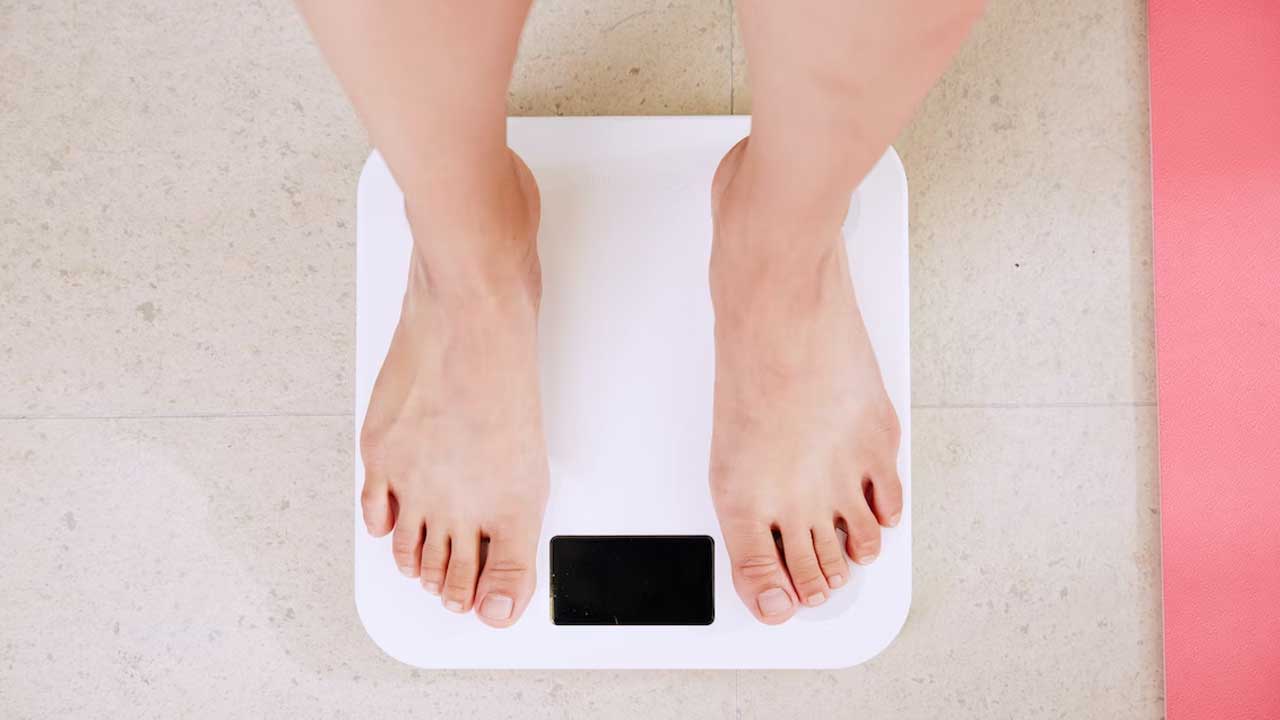 FitnessDecember 8, 2022Why Am I Not Losing Weight When I Exercise?
FitnessDecember 8, 2022Why Am I Not Losing Weight When I Exercise? FitnessNovember 25, 2022Tai Chi for Exercise- The Benefits of An Ancient Exercise
FitnessNovember 25, 2022Tai Chi for Exercise- The Benefits of An Ancient Exercise
Affiliates:
This post may contain affiliate links that at no additional cost to you, the site may earn a small commission. We only recommend products we would use ourselves and all opinions expressed on this site are our own.
General Advice:
The information provided in this article is for general informational purposes only. It is not intended as a substitute for professional advice. Always consult with a qualified healthcare professional before starting any new diet, exercise program, or making changes to your health routine.
Accuracy Advice:
While we strive to provide up-to-date and accurate information, the content in this article may not reflect the most current research or medical guidelines. We encourage readers to do further research and consult with professionals for more personalized advice.
Our Recommendations:
The products and services mentioned in any of our articles are recommended based on our independent research and personal experience. We are not sponsored by any company. We aim to suggest products and services we believe are of high quality and could be beneficial to our readers.


